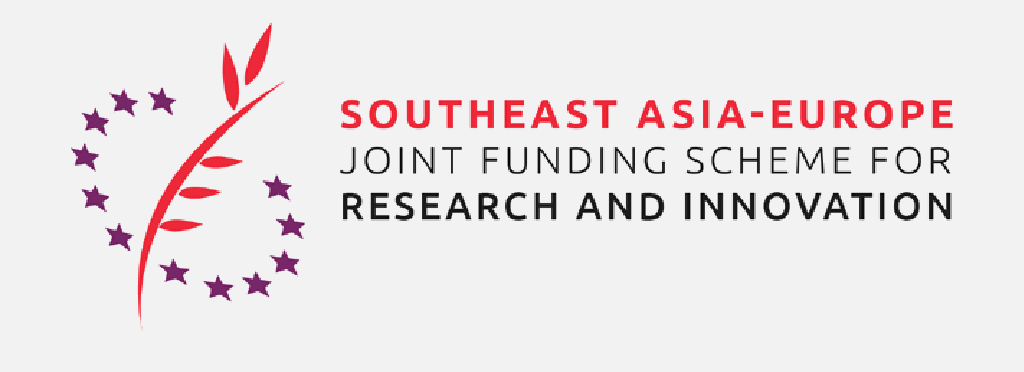
3rd Joint Call: MOISTURE
Background
Metal oxide nanoparticles (MONs) have attracted significant attention to energy storage and conversion applications. The substantial benefits of MONs consist of: (1) structural changes allowing for the attraction of lattice criteria (2) changes in electrochemical attributes due to the quantum confinement effect and (3) changes in surface properties leading to drastic modification of their conductivity and chemical activity. Different types of MON e.g. MnO2 and Zn2SnO4 (ZTO) have been thoroughly investigated for photovoltaic and battery applications. Nevertheless, MONs exhibit uncommon adsorptive properties and fast diffusivities, and they are not stable in critical conditions. There is great interest in using a barrier layer made of very thin layers of stable metal oxides coatings e.g. Al2O3, ZnO, and SnO2. In the synthesis and application of the protective coatings of MONs, real challenges arise which have high potential whether for industrial applications or academic research.
The Project
The primary objective of this joint project is to generate a stable energy storage i.e. a zinc-ion battery (ZIB) as well as energy conversion (Perovskite solar cell) devices. This will be achieved by optimizing particle sizes, morphologies, structure, and phases of Metal Oxide Nanoparticles (MONs) via an inexpensive and eco-friendly hydrothermal process and depositing a protective Metal Oxide (MO) coating on its surface via Atomic Layer Deposition (ALD) process.
The Science
Metal oxide (MO) layers are well-known candidates for barrier layers in a variety of energy devices. Among the metal oxides, aluminum oxide, titanium oxide, zirconium oxide, tin oxide, and various nanolaminates of these materials, grown from atomic layer deposition (ALD), have been proven to provide promising thin-film barriers. ALD deposited MO layers provide substantial protection from water, oxygen, and other corrosive species and can be employed to enhance the long-term stability of sensitive devices such as organic light-emitting diodes (OLEDs) or organic / perovskite solar cells.
The concept of ALD coating has also been widely employed to improve the performance of lithium-ion batteries (LiBs). For instance, the ALD of Al2O3 film on LiCoO2 minimizes Co dissolution and reduces surface electrolyte reactions. In addition, ALD of Al2O3 on LiMn2O4/carbon electrodes was found not only to serve as a physical barrier between the electrolyte and the electrode, but also to exhibit relatively good ionic conductivity which prevents a significant increase in polarization resistance. Moreover, Al2O3 coating significantly mitigates side reactions of active materials without restricting the uptake and release of lithium ions. Later on, the concept of barrier coating was applied in ZIBs wherein it was found that self-discharge of the battery was considerably suppressed without sacrificing battery performance by coating a thin layer coating of Al2O3 onto the surface of the zinc particles.
Even though the technique of spatial atmospheric pressure atomic layer deposition (SAP-ALD) enables roll to roll (R2R) implementation of ALD, it is a slow technique with growth rates ranging in some few nm / s. This is mainly due to the necessity for a layer-by-layer buildup of the volume. Hence, a reduction of the necessary ALD cycles, while simultaneously maintaining the unique layer properties, is highly desirable, due to the direct impact in lowering production costs. A promising approach to improve this position is to grow the ALD layer on top of the nanoparticle scaffold. This is believed to improve the effective barrier volume without the need for additional ALD cycles.
Among metal oxide electron-transporting materials, zinc tin oxide (ZTO) is one of the promising semiconductors due to its chemical stability towards acid/base and ambient environments, its high electron mobility of 10-25 cm2 V-1 s-1, wide optical bandgap (3.8 eV), and compatible conduction band edge (3.8-4.0 eV) with that of perovskite materials. In addition, it was reported that the perovskite solar cell with the ZTO nanoparticle (NP) layer showed the enhanced ambient stability under 30 ± 5 %relative humidity in comparison with the one without ZTO. Particle size and crystallinity also have a strong effect on electron collection ability owing to the interconnection between individual nanoparticles. Highly crystalline having a relatively large particle size is required for efficient electron collection. At the same time, the particle size (due to concomitant interspace) is expected to influence the diffusion of ALD precursor into a NP scaffold. Consequently, a deeper understanding of the interplay between NP size/shape and the ALD growth properties (most prominently temperature to promote precursor diffusion) and their impact on the resulting layer barrier properties is highly desirable.
The Team
Project Coordinator:
Assoc. Prof. Dr. Soorathep Kheawhom
Faculty of Engineering
Chulalongkorn University, Thailand
Asst. Prof. Dr. Pipat Ruankham
Faculty of Science
Chiang Mai University, Thailand
Dr. Rongrong Cheacharoen
Metallurgy and Materials Science Research Institute,
Chulalongkorn University, Thailand
Dr. Ryan D. Corpuz
CEO, Nanolabs LRC Co. Ltd.
Team lead, iNano Research Facility
De La Salle University-Manila, The Philipines
Dr. Lyn Marie DJ. Corpuz
CTO, Nanolabs LRC Co. Ltd.
Resident Scientist, Research Center for Natural and Applied Sciences
University of San Tomas
Prof. Dr. Thomas Riedl
Chair of Electronic Devices
University of Wuppertal, Germany

